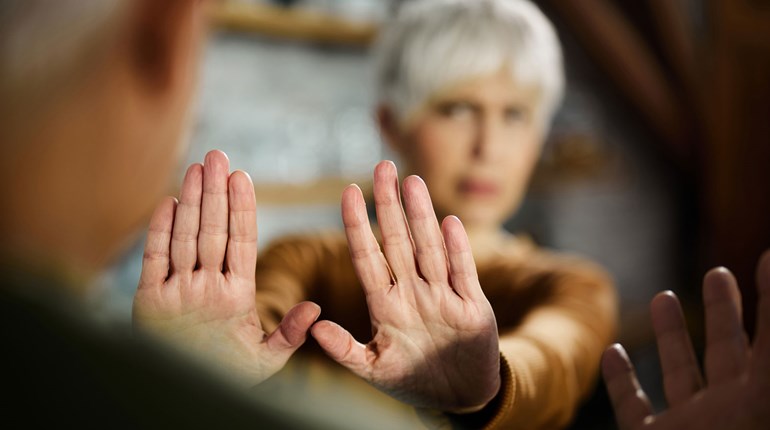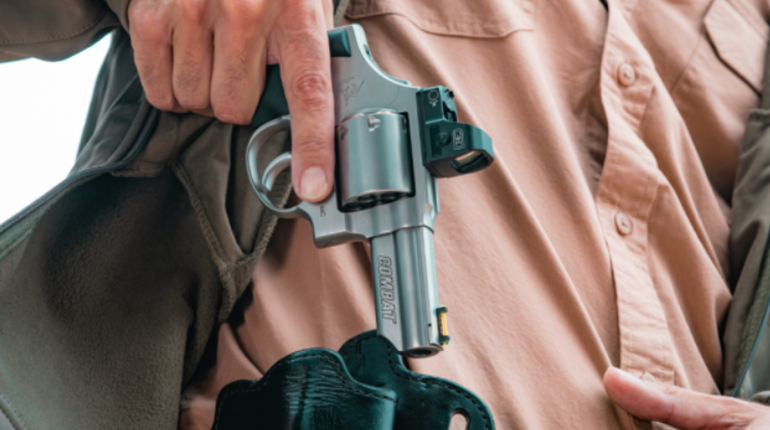
One of the most recent two-hand grips to show up in defensive training is the thumbs-forward grip. This grip chokes up high on a semi-automatic pistol with both thumbs pointing straight forward along the left side of the frame. It offers significant recoil management for faster follow up shots, and some argue it is inherently accurate.

To take the thumbs-forward grip, grasp the gun high up on the grip with your trigger-finger along the frame. Curl your remaining fingers around the frontstrap, and place your thumb over the safety (for 1911-type pistols) pointing forward.
You'll notice an empty gap between the heel of your hand and the tip of your fingers on the left side of the grip. Fill that gap with the heel of your support hand, with your thumb pointing forward along the slide. Curl your support-hand fingers around your strong-hand fingers, and you've got the grip.
Because a handgun is an L-shaped tool and you hold it by one leg of that L, the muzzle tends to rise during recoil. But, the higher up you grasp the gun with the thumbs-forward grip, the less mechanical advantage recoil has and the less the muzzle rises.

Recoil also tends to move the gun in the direction of the least mass contacting it. For example, if you shoot a handgun holding it in only your right hand, the gun tends to kick upward and to the left, because the mass of your hand is on the lower-right side of the gun. The nature of the thumbs-forward grip is to evenly distribute the most mass around the circumference of the grip. The result is reduced angular recoil that, when combined with less muzzle rise, lets a shooter get back on target faster for follow-up shots.
The increased accuracy argument comes from a belief that humans naturally point their thumbs precisely at objects. I'm not completely sold on that notion, but I do accept one can reasonably point their thumbs at a close object, meaning with a thumbs-forward grip, the shooter is more likely to be pointing the gun at the target than not.

Where I believe this idea and accuracy come into play with this grip is during the draw. I recently began training with a former air marshal, who instructed me to pull my support hand to the middle of my chest with the thumb pointing forward instead of up as I rock the muzzle forward from the holster when drawing. That hand position serves several purposes. First, it puts your support hand in a safe place while drawing the pistol. Second, it pre-positions the support hand and thumb to drop nicely into the gap created for the thumbs-forward grip. Third, if humans indeed point their thumbs with reasonable accuracy, when your hands come together on the gun, it is pointing at the threat.
Though it has a lot going for it, there are elements of the thumbs-forward grip that are going to vary individually. How well does it work for you during a retention drill? Can you reliably use this grip without compromising the function of controls such as the slide stop and safety? Are your hands so large or your gun so small that you risk injuring your thumb from muzzle blast?
There is no such thing as the "best" grip, because guns, shooters and environments all differ, but as a foundation upon which to build, the thumbs-forward grip has a lot going for it. It also begs the question: What is your fundamental grip, and under what circumstances do you vary it?





































